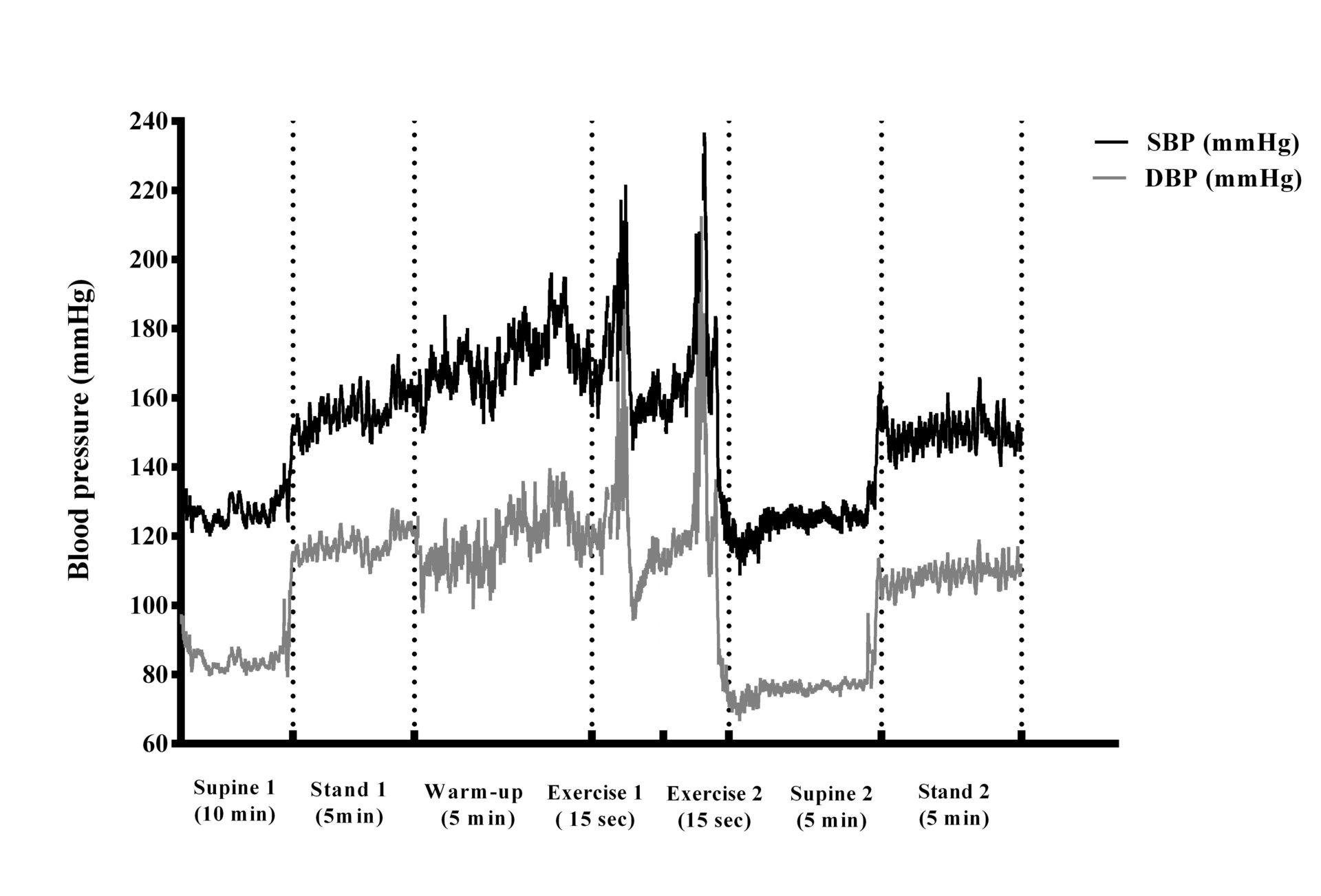Introduction: The variable load exercise model (e.g., the flywheel, FW) is currently considered to be the most effective method for countering muscle-atrophy (Seynnes et al., 2007). However, it is still unknown to which extent this type of exercise challenges the cardiovascular system. We investigated the effects of the FW exercise (nHance, Barcelona, Spain) on hemodynamics and cardiovascular adjustments in healthy, normotensive participants. Methods: The present study was approved by the Republic of Slovenia National Medical Ethics Committee (approval number: 120-487/2018/21). Thirty participants (age from 20 to 55 y, 37% women) underwent a detailed medical examination and their V’O2 max. was determined. Following preliminary sessions completion, the participants performed three different experimental conditions (in a random order), that is, the FW squat ergometer set at three different (low at 0.025 kg·m2, moderate at 0.050 kg·m2 and high at 0.075 kg·m2) moments of inertia. The hemodynamics response and the heart rate (HR) were continuously monitored (Task force monitor, CNSystems, Graz, Austria) throughout all FW sessions. More precisely, the blood pressure was assessed via photoplethysmograph using a pneumatic cuff, positioned around the middle finger of the left hand, instructed to be held at the level of the heart throughout the session. The cardio-impedance electrodes were positioned according to the manufacturer’s guidelines to allow non-invasive insight into the hemodynamics throughout the experimental sessions, while the HR was obtained from the bipolar 3-lead electrocardiograph (Goswami et al., 2015). Results: A robust rise in mean arterial pressure (MAP) was observed across all three moments of inertia compared to baseline (p=.001), while MAP had reached the highest values of 179±4 mmHg during high inertial loading. All hemodynamics parameters had a similar response to different FW exercise throughout, while the total peripheral resistance increased by 11% (p=.001) during the high inertial loading. Likewise, an increase in HR was noted during all exercise interventions compared to baseline (p=.001), whereas the HR response was 10 bpm higher (p=.001) at high level compared to readings at low and moderate loading. There were no correlations observed between relative increase in MAP and the age of the participants across different levels of inertial loadings. Conclusion: Apparently, larger moments of inertia during FW exercise impose a substantial burden to the cardiovascular system, whereas the study population age-related differences did not modulate a robust rise in MAP following FW exercise. Thus, caution is warranted when prescribing high-load FW exercise to counter muscle-atrophy.
Future Physiology 2020 (Virutal) (2020) Proc Physiol Soc 46, PC0015
Poster Communications: Larger loads of inertia during flywheel exercise impose a greater burden to the cardiovascular system in normotensive adults
Damir Zubac1, Vladimir Ivančev2, Zoran Valić3, Rado Pišot1, Cécil J. W. Meulenberg1, Nandu Goswami4, Boštjan Šimunič1
1 Science and Research Center Koper, Institute for Kinesiology Research, Koper, Slovenia 2 University of Split, Faculty of Kinesiology, Split, Croatia 3 University of Split, School of Medicine, Department of Integrative Physiology, Split, Croatia 4 Gravitational Physiology, Aging and Medicine Research Unit, Physiology Division, Otto Loewi Center of Vascular Biology, Immunity and Inflammation, Medical University of Graz, Graz, Austria
View other abstracts by:
Where applicable, experiments conform with Society ethical requirements.

